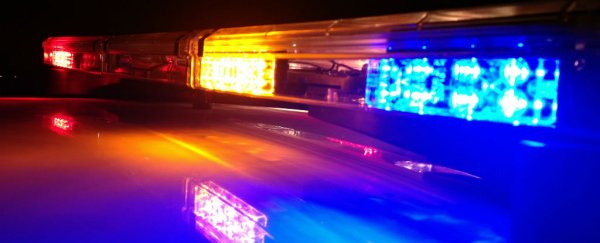Back in November, a wireless technology called li-fi made a splash, proving to be 100 times faster than average wi-fi speeds in its first 'real world' tests.
Unlike wi-fi, which is based on radio frequencies, li-fi uses a much faster system based on visual light, and researchers in Saudi Arabia have just developed a lightbulb that can transmit data more than 40 times faster than any existing li-fi devices.
The invention of li-fi has been credited to Scottish communications expert Harald Haas from the University of Edinburgh, when he demonstrated for the first time back in 2011 that by flickering the light from a single light-emitting diode (LED), he could transmit far more data than a cellular tower.
The technology is based on something called Visible Light Communication (or VLC), which piggy-backs on visible light frequencies between 400 and 800 terahertz (THz).
Using these light frequencies, li-fi works like an incredibly complex form of Morse code - by flicking an LED on and off at extreme speeds imperceptible to the human eye, you can write and transmit data in binary code.
Imagine having smart LEDs installed in your home and office ceilings that can wirelessly connect to your computers, phones, printers, and air-conditioning units as they illuminate the space.

In November last year, a team from the Estonian tech company, Velmenni, managed to take this technology out of the lab for the first time, and when they tested it in offices and industrial environments in their local area, achieved speeds of 224 gigabits per second.
Not only was that 100 times faster than average wi-fi speeds at the time, it's the equivalent of 18 movies of 1.5 GB each being downloaded every single second.
Now times that by 40.
Researchers from the King Abdullah University of Science and Technology in Saudi Arabia have figured out how to take li-fi to the next level, by setting a brand new speed limit.
Many VLC devices rely on LEDs that produce white light. These devices work by taking blue diodes and combining them with phosphorous, and some of the resulting radiation is converted into red and green light.
As we learned in primary school, if you combine red, green, and blue light, you get white, and that's how LED lights illuminate our houses and phone and laptop displays.
"VLC using white light generated in this way is limited to about 100 million bits per second," says one of the team, electrical engineer Boon Ooi.
As Daniel Oberhaus explains for Motherboard, the reason for this limit is the fact that the time it takes to convert this blue light into white light takes longer than how quickly an LED light can be turned on and off.
This effectively limits LED-based li-fi devices to a maximum bandwidth of about 12 megahertz (MHz).
"The rate at which the light can turn on and off is important, because this is the method that the LED light uses to communicate," says Oberhaus.
"By turning on and off faster than the eye can see, the LED communicates in binary code with a receiver - the faster this transition happens, the greater the bandwidth, which dictates how much information can be conveyed."
Ooi and his team decided to use something completely different for their li-fi lightbulb - they're based theirs on nanocrystals of caesium lead bromide, combined with a solution of nitride phosphor.
When illuminated by a blue laser light, the nanocrystals emit some green light, while the nitride emits red light, and - you guessed it - we have white light.
The team reports that their new device can produce this reaction at a frequency of 491 Megahertz, and can transmit data at a rate of 2 billion bits per second - that's 40 times faster than the absolute limit using phosphorus.
To make things fair, they will have to demonstrate this achievement in a 'real-world' setting, like the Estonian researchers did last year, but li-fi might have just gotten a whole lot more awesome before it's even started.
The research has been published in ACS Photonics.
